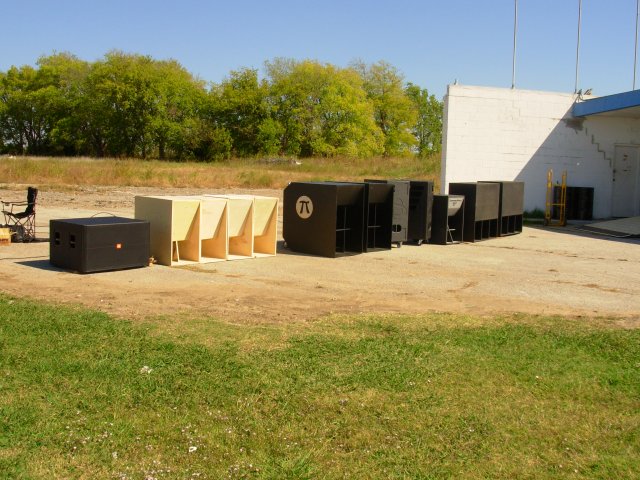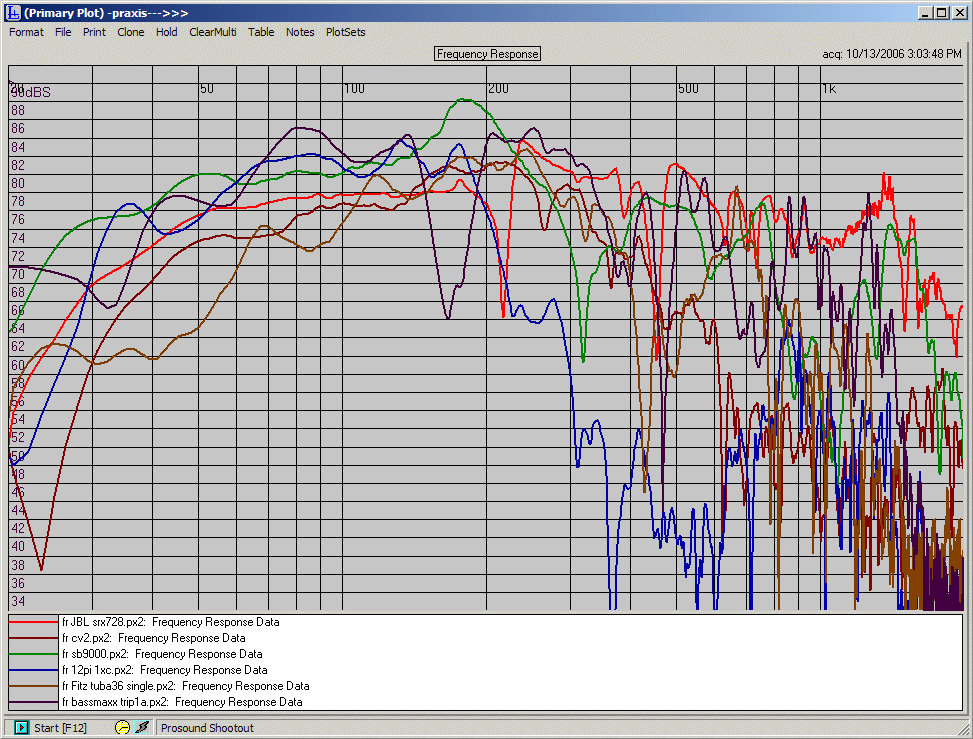|
|
|
|
|
|
|
|
|
|
|
|
| Comparison of systems [message #28192 is a reply to message #28174] |
Wed, 18 October 2006 11:01   |
 |
 Wayne Parham
Wayne Parham
Messages: 18984
Registered: January 2001
|
Illuminati (33rd Degree) |
|
|
 Lineup of subwoofers at the 2006 Prosound Shootout
Lineup of subwoofers at the 2006 Prosound Shootout
Left to right, the systems tested shown above are one JBL SRX728S, four Tuba 36 basshorns, two 12π basshorns, two Soundbridge 7218S subwoofers, one Cerwin Vega L36 and two BASSMAXX Tripp basshorns.
Response graphs are shown below. One shows a comparison of single cabinets, and the other shows duals. A couple things should be mentioned that are not completely obvious when looking at the response graphs. First, the data is normalized to 2v. Voltage is constant, not power, so systems with lower impedance will develop more power. See the individual impedance charts. Also, the measurements were taken at 10 meters, so add 20dB to know the 1 meter level. Second, the numbers of drivers and cabinets is not uniform. For example, the Soundbridge 7218S is designed to be used in pairs of cabinets, effectively making it a quad-18. For that reason, it is included in both the single and dual cabinet comparison charts. The JBL SRX728S uses a pair of drivers. The BASSMAXX Tripp contains three drivers and the 12π contains two, but the Cerwin Vega and Tuba 36 each contain only one driver. Again, the impedance charts for each might be compared when doing SPL comparisons. The Tuba 36 was measured as a single cabinet, a pair and quad. The legend at the bottom of each chart identifies the traces with the systems tested.
 Frequency Response Comparison (Single Cabinets)(SPL at 10m with 2v input. Add 23dB to normalize to 2.83v/M)
Frequency Response Comparison (Single Cabinets)(SPL at 10m with 2v input. Add 23dB to normalize to 2.83v/M)
 Frequency Response Comparison (Dual Cabinets)(SPL at 10m with 2v input. Add 23dB to normalize to 2.83v/M)
Frequency Response Comparison (Dual Cabinets)(SPL at 10m with 2v input. Add 23dB to normalize to 2.83v/M)
|
|
|
|
|
|
|
|
|
|







